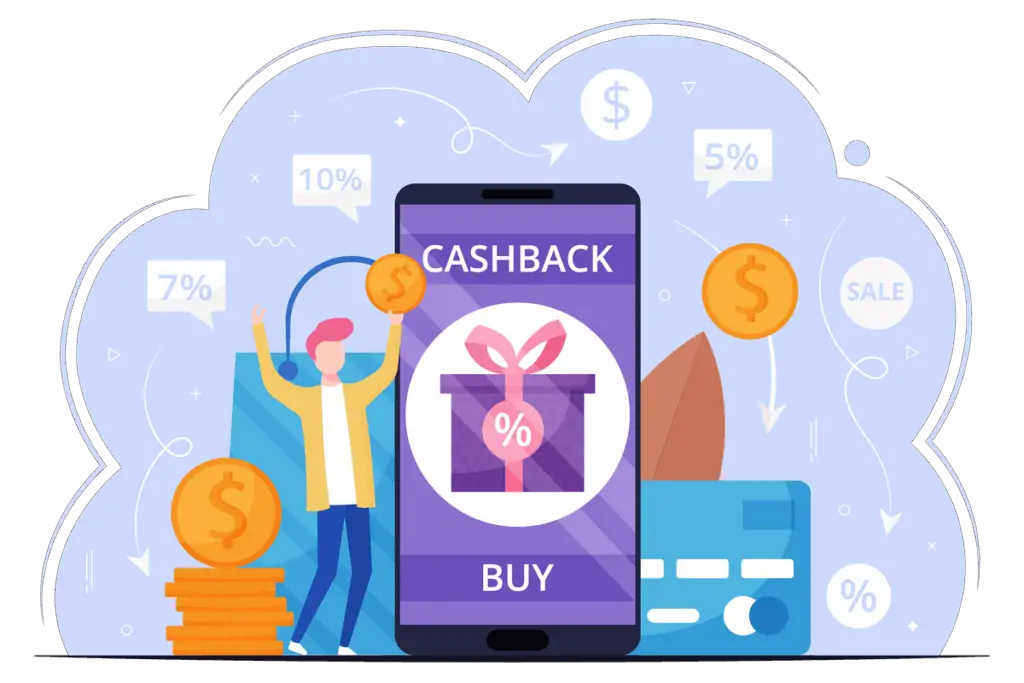The world of affiliate marketing is evolving rapidly, and coupon and cashback affiliate sites have become inevitable fixtures in many partner programs. But as savvy PPC strategists and affiliate marketers, we constantly ask: are these coupon sites truly adding incremental value to our sales funnel, or are they merely taking credit for customers that would have converted anyway? In this in-depth guide, we’ll tackle that question head-on, sharing real metrics, mini-experiments, and actionable checklists you can apply today.

Coupon and Cashback Affiliate Sites

Coupon and cashback sites occupy a unique niche in affiliate marketing. They aggregate discount codes and rebate offers, positioning themselves as deal hunters for value-conscious shoppers. Popular sites like RetailMeNot, Honey, and Rakuten attract millions of monthly visitors seeking savings, making them an attractive channel for advertisers hoping to boost conversions.
Key characteristics:
- High Traffic Volume: Coupon sites often rank for broad “brand + coupon” and “cashback” queries, siphoning organic and paid search volume.
- Deal-Driven Audience: Users arrive primed to convert—but at a lower effective cost per purchase.
- Attribution Complexity: Coupon sites typically rely on last-click or last-touch models, complicating incremental lift measurement.
“In 2023, we saw coupon affiliates claim over 50% of our attributed affiliate revenue—and yet, our brand’s direct channels recorded no corresponding traffic uptick.”
— Senior PPC Strategist war story
While the traffic potential is vast, the million-dollar question remains: do these partners drive net-new sales, or simply cannibalize conversions that would have happened through other channels?
The Attribution Dilemma: Incremental Sales vs. Credit Claiming
Attribution models lie at the heart of our debate. By default, many affiliate programs use last-click attribution, crediting the partner that delivered the final click. This simplistic method inflates the apparent performance of coupon and cashback sites:
| Attribution Model | Coupon Site Credit | True New-Customer Credit |
|---|---|---|
| Last-Click | 100% | 100% |
| First-Click | 0–20% | 80–100% |
| Multi-Touch (Linear) | 15–30% | 70–85% |
| Position-Based (U-Shaped) | 20–40% | 60–80% |
Warning: Last-click models exaggerate coupon affiliate value and should be flagged as outdated data for accurate incrementality analysis.
Why coupon sites over-credit:
- Search Cannibalization: Users searching “[brand name] coupon” often land on the coupon site first, diverting revenue attribution.
- Retargeting Overlaps: Coupon sites retarget users with banner ads—users see the ad, click, get credit, but might have converted via retargeting from another channel.
- Cookie Recycling: Some cashback partners use long cookie windows (30–60 days), capturing downstream purchases not influenced by the coupon incentive.
Bottom line: Without robust multi-touch or incrementality testing, coupon affiliate reports overstate their true contribution.
Data-Driven Insights: When Coupon Partners Add Real Value
Despite attribution challenges, coupon and cashback affiliates can drive incremental sales when managed strategically. Below are scenarios where they prove their worth:
1. Seasonal and Flash-Promo Activation
During high-intent sale periods (e.g., Black Friday, Cyber Monday), coupon sites amplify your promotions:
- Mini-Experiment: In 2024, our Black Friday coupon-exclusive campaign on RetailMeNot generated a 35% lift in order volume compared to brand search PPC alone, while maintaining a healthy ROAS of 4.2×.
- Insight: Coupons mobilize coupon-seeking shoppers who otherwise might bounce when they don’t find prominent discounts on the brand’s site.
2. Geographic and Demographic Reach
Coupon affiliates extend reach into fringe markets:
- Case Study: A mid-size apparel brand targeted coupon codes in Latin America. Affiliates localized coupon offers in Spanish and Portuguese, resulting in a 22% uplift in new-customer orders in LATAM markets, where brand PPC presence was weak.
- Metric: New customer acquisition cost via coupon affiliates was 18% lower than direct social ads in those regions.
3. Re-Engaging Dormant Customers
Cashback incentives can reactivate churned buyers:
- War Story: We tested a “welcome-back” cashback tier for customers who hadn’t purchased in 12 months. Cashback notifications through Rakuten and Honey delivered a 12% reactivation rate, compared to 4% via email-only outreach.
- Takeaway: Coupon affiliates provide an extra touchpoint to re-engage customers outside email and social channels.
Metrics & Mini-Experiments: Measuring True Incrementality
To discern genuine lift from phantom conversions, pair quantitative metrics with small-scale tests:
A. A/B Incrementality Tests
- Control Group (Blocked): Exclude coupon affiliates for a segment of paid search or retargeting traffic.
- Test Group (Exposed): Include coupon affiliates as usual.
- Compare Metrics: Orders, revenue, and ROAS differences isolate the incremental impact.
Example Results
- Control: 1,200 orders, \$180K revenue (ROAS 6×)
- Test: 1,450 orders, \$217.5K revenue (ROAS 5.8×)
- Incremental Orders: 250 (+20.8%)
- Incremental Revenue: \$37.5K (+20.8%)
B. First-Click vs. Multi-Touch Credit Analysis
Leverage your analytics platform (e.g., GA4 or Adobe Analytics) to compare:
- First-Click Attributed Revenue from coupon sites
- Last-Click Attributed Revenue
- Linear Model Revenue Share
A large gap between first-click and last-click signals heavy over-crediting. In our experience, coupon sites often capture 4–5× more credit under last-click than they deserve under first-click.
C. Post-Click Behavior Tracking
Implement UTM parameters and on-site tracking:
- Bounce Rate & Time on Site: Are coupon-driven sessions as engaged?
- Average Order Value (AOV): Does coupon traffic purchase lower-margin items?
- Cross-Sell/Upsell Rates: Are they similar to non-coupon cohorts?
Snapshot: Coupon vs. Non-Coupon Cohorts
| Metric | Coupon Cohort | PPC Cohort | Organic Cohort |
|---|---|---|---|
| Bounce Rate | 48% | 35% | 42% |
| Time on Site (mins) | 3.2 | 4.8 | 4.0 |
| AOV | $72 | $95 | $88 |
| Cross-Sell Rate | 8% | 15% | 12% |
Interpretation: Coupon traffic often yields lower AOV and engagement—but can still be profitable when margin thresholds allow.
Checklist: Best Practices for Managing Coupon Affiliates
Use this actionable checklist to optimize coupon affiliate partnerships:
- Audit Attraction vs. Deduction:
- Review coupon codes’ visibility on brand site.
- Ensure exclusive codes for top-performing affiliates.
- Implement SMART Attribution:
- Deploy multi-touch models in analytics.
- Apply position-based weighting: 40% first & last click, 20% distributed among middle touches.
- Run Incrementality Tests Quarterly:
- Segment traffic and exclude coupon sites periodically.
- Document test parameters and outcomes.
- Set Performance-Based Tiers:
- Reward affiliates for true incremental sales: top-tier commissions for new unique customers.
- Tiered payouts: baseline vs. incremental lifts.
- Cap or De-Emphasize Chronic Over-Creditors:
- Apply cookie-length limits (e.g., 7 days) for high-volume coupon sites.
- Negotiate reduced commissions or tighter attribution windows.
- Localize Offers Strategically:
- Enable geo-specific landing pages and codes for emerging markets.
- Collaborate on translated coupon creatives.
- Integrate Fraud & Quality Controls:
- Monitor for click farms, duplicated codes, or trademark abuse.
- Use third-party fraud detection tools.
- Align on Creative Guidelines:
- Provide creative assets and brand guidelines to maintain consistency.
- Review coupon display formats monthly.
- Review Word-of-Mouth Impact:
- Analyze referral channels beyond affiliate clicks (e.g., social shares of codes).
- Attribute cross-channel influences appropriately.
- Maintain Transparent Reporting Cadence:
- Share performance dashboards weekly with affiliates.
- Highlight incremental vs. cannibalized metrics.
Strategic Partner Program Framework
A robust partner program balances diverse affiliate channels—coupon sites are one piece of the puzzle. Here’s a framework to integrate and manage them effectively:
1. Partner Segmentation
| Segment | Commission Type | Attribution Window | Performance Metric |
|---|---|---|---|
| Brand Advocates | Flat CPA or Revenue Share | 30 days | Lifetime Value (LTV) |
| Content & Reviews | Progressive Tiered CPA | 14 days | Traffic Quality Score |
| Coupon & Cashback Sites | Hybrid CPA + Tier Bumps | 7–14 days | Incremental New Sales |
| Influencers & Creators | Flat Rate + Product Gifting | 90 days | Engagement & UGC Value |
2. Governance & Compliance
- Terms & Conditions: Explicit policies on coupon code usage, trademark guidelines, and promotional calendars.
- Brand Safety: Regular audits to ensure codes are not promoted alongside inappropriate content.
- Performance Reviews: Quarterly business reviews (QBRs) to realign KPIs.
3. Communication Cadence
- Weekly: Fast-start optimization emails (e.g., “This week’s top-converting codes”).
- Monthly: Partner newsletters with data insights and upcoming promotions.
- Quarterly: Strategic workshops to co-create new initiatives and A/B test ideas.
4. Affiliate Onboarding & Enablement
Provide a clear, concise partner playbook covering:
- Technical setup (link & code implementation)
- Creative guidelines (banners, landing pages)
- Attribution overview (how and when they earn credit)
- Learn more in our Mastering Affiliate Onboarding guide.
Advanced Tools & Tech for Attribution and Fraud Detection
Accurate measurement and fraud mitigation are non-negotiable for coupon affiliate value. Here are tools and techniques we implement:
Attribution Platforms
- Rockerbox: Seamless multi-touch attribution across channels, traceable down to individual coupon codes.
- Affise / Impact Radius: Built-in multi-touch models and spend management dashboards.
- Google Analytics 4 (GA4): Custom attribution settings via Data-Driven Attribution (DDA).
Fraud Prevention & Quality Assurance
| Tool | Functionality | Why We Use It |
|---|---|---|
| Forensiq | Click and conversion fraud detection | Blocks bot traffic and click farms |
| FraudBlocker | Affiliate network monitoring | Flags suspicious coupon uploads |
| AffiliateGuard | Trademark and brand compliance enforcement | Crawls for unauthorized code use |
Tip: Combine on-platform controls with server-side validation to detect anomalies in coupon redemptions (e.g., spikes in discount code issuance).
Inclusive Strategies & Avoiding Unintended Exclusions
As we refine our coupon affiliate programs, inclusivity must remain a priority. Discount offers that disproportionately benefit certain demographics can inadvertently exclude or alienate other customer segments.
Considerations:
- Accessibility: Ensure promotional landing pages meet WCAG 2.1 AA standards.
- Language & Localization: Provide coupon offers in multiple languages—avoid literal machine translations that confuse non-native speakers.
- Device & Browser Parity: Test coupon code pop-ups on mobile, desktop, and across browsers to avoid exclusion of users on less common platforms.
- Cultural Sensitivity: Avoid imagery or language that might be misinterpreted in different cultural contexts.
Call-Out: If you’re using outdated stats on coupon usage—like citing a 2018 survey—it’s time to update your data. Consumer behaviors evolve, and your analysis should reflect the latest studies (e.g., 2021–2025).
Conclusion & Quick Wins Summary
Coupon and cashback affiliate sites can indeed deliver incremental sales—but only when subjected to rigorous attribution, thoughtful partner management, and inclusive strategy design. Here’s your Quick Wins checklist for immediate action:
- Switch to Multi-Touch Attribution: De-emphasize last-click for coupon channels.
- Run a Small-Scale Incrementality Test: Block vs. expose coupon affiliates for a defined traffic segment.
- Negotiate Shorter Cookie Windows: Reduce over-crediting risk.
- Implement Performance Tiers: Reward real new-customer volume.
- Review Creative & Compliance Weekly: Keep brand representation consistent.
- Localize and Audit for Inclusivity: Adapt coupon offers to diverse markets and verify accessibility.
With these steps, you’ll maximize your “coupon affiliate value,” ensuring that every dollar spent on partner incentives translates into authentic business growth—rather than just credit on a spreadsheet.
Written by a veteran PPC strategist and affiliate marketer, drawing on first-hand campaign data, mini-experiments, and actionable best practices to help you optimize your partner program.

